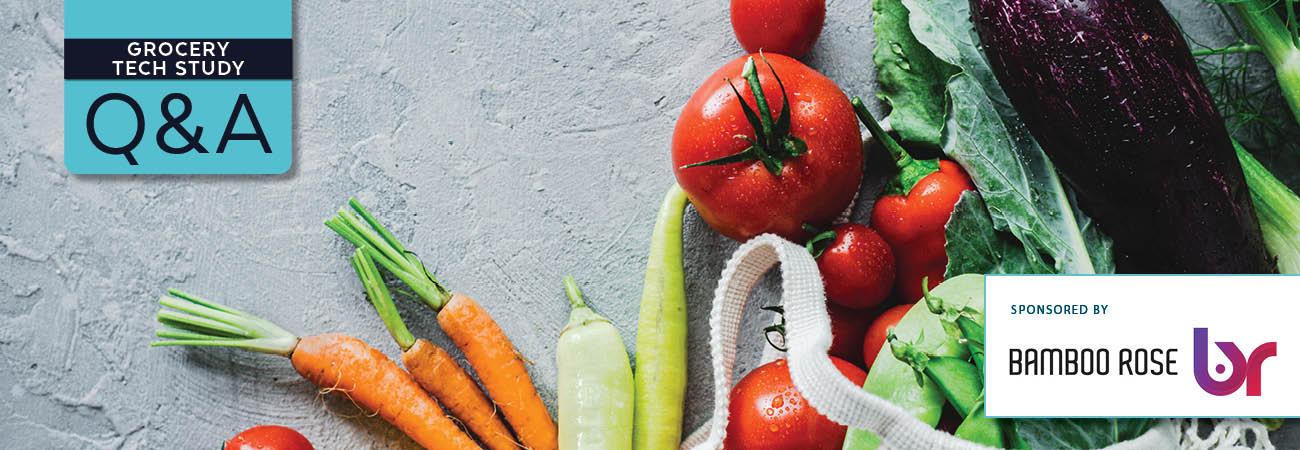Grocers Must Develop a Data-Driven Product Strategy
With changes in the way the public eats coupled with the need for sustainable food options grocers must reexamine their assortment building strategies with a renewed focus on data.
Grocers house tens of thousands of SKUs in their stores and deciding which national and private brand products to include in the merchandising mix has become more science than art. To ensure they have the in-demand products consumers demand on their shelves, tech-savvy grocers are deploying next-gen analytics and product lifecycle management solutions to keep their assortments fresh.
To explore how grocers can best use these valuable technologies, Bamboo Rose’s CEO Sue Welch sat down with RIS to answer a few questions on the topic.
RIS: How do leading grocers leverage consumer data to inform their private brand strategy?
Welch: Consumer data is invaluable in today’s food and grocery industry, and when it’s harnessed and applied effectively across business processes, it can serve as a competitive edge. A connected platform capable of leveraging market data inputs to inform private brand strategy can help grocers focus their assortment on popular product categories while reducing spend on areas with less consumer interest. This data-driven strategy helps to bolster profit margins, revenue, and competitive differentiation. Our clients are also sharing these consumer insights with suppliers through the Bamboo Rose B2B Marketplace. Adding these hot items to digital showrooms on Marketplace, where the entire supplier base can view this data, creates an opportunity for grocers and suppliers to collaboratively identify new winners, or products that fly off the shelves and generate consumer buzz around the retail brand.
RIS: Where are the most forward-thinking grocers placing big tech investment bets?
Welch: Grocers should be focused on product innovation and design tools, such as product lifecycle management (PLM), to bring agility and speed to their private brand strategy. In 2020, private brand sales grew by 12% year over year as consumers attempted to reduce spend and got more open-minded in their eating habits. Industry leading retailers are already capitalizing on this trend by bringing private brands to market that outpace national brands in terms of quality and alignment with emerging consumer tastes. To keep pace with the competition, retailers must take control of their private brand strategy by leveraging a multi-enterprise PLM solution to ensure products are coming to market at the quality, cost, and packaging requirements necessary for their target markets.
RIS: How can grocers gain true end-to-end supply chain visibility?
Welch: True supply chain visibility is all about driving simultaneous connectivity and mutual value across your business partner community. Grocers today need complete supply chain visibility to ensure alignment, agility, and resilience amidst unstable supply chain conditions. Engaging all partners on a multi-enterprise platform that drives efficiency for all parties is the best way to ensure product traceability to the ingredient level, hold suppliers accountable for product quality, and closely track logistics partners against delivery timelines. Our clients leverage Bamboo Rose to communicate in real-time with suppliers, eliminate siloes across business processes, and bring differentiating products to market on time and at cost.
RIS: What are the biggest technology innovations that grocers need to be aware of as they look to future-proof their enterprises?
Welch: Consumers, regulatory bodies, and financial analysts are placing increasing scrutiny on retailers’ environmental, social, and governance (ESG) strategies in 2021. We’re already seeing clients incorporate new processes and metrics into their product development and supply chain operations to account for this ESG focus. Grocers will need flexible technology tools that can adapt to emerging ESG requirements and the ability to elevate this data to relevant third parties. Grocers who integrate ESG-conscious processes and metrics into their product and supply chain organizations today will be well positioned as these requirements become table stakes in the next 2-4 years.








